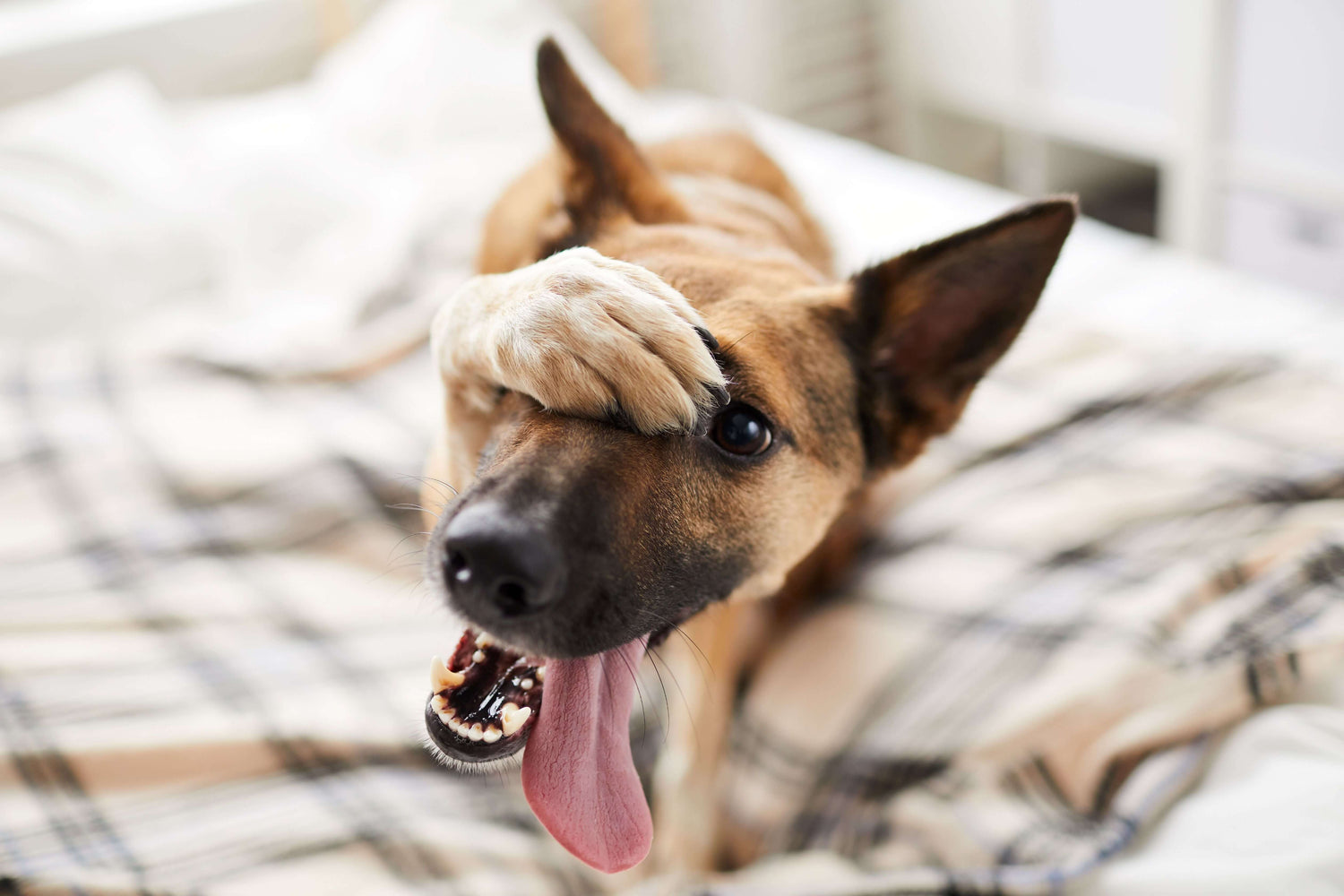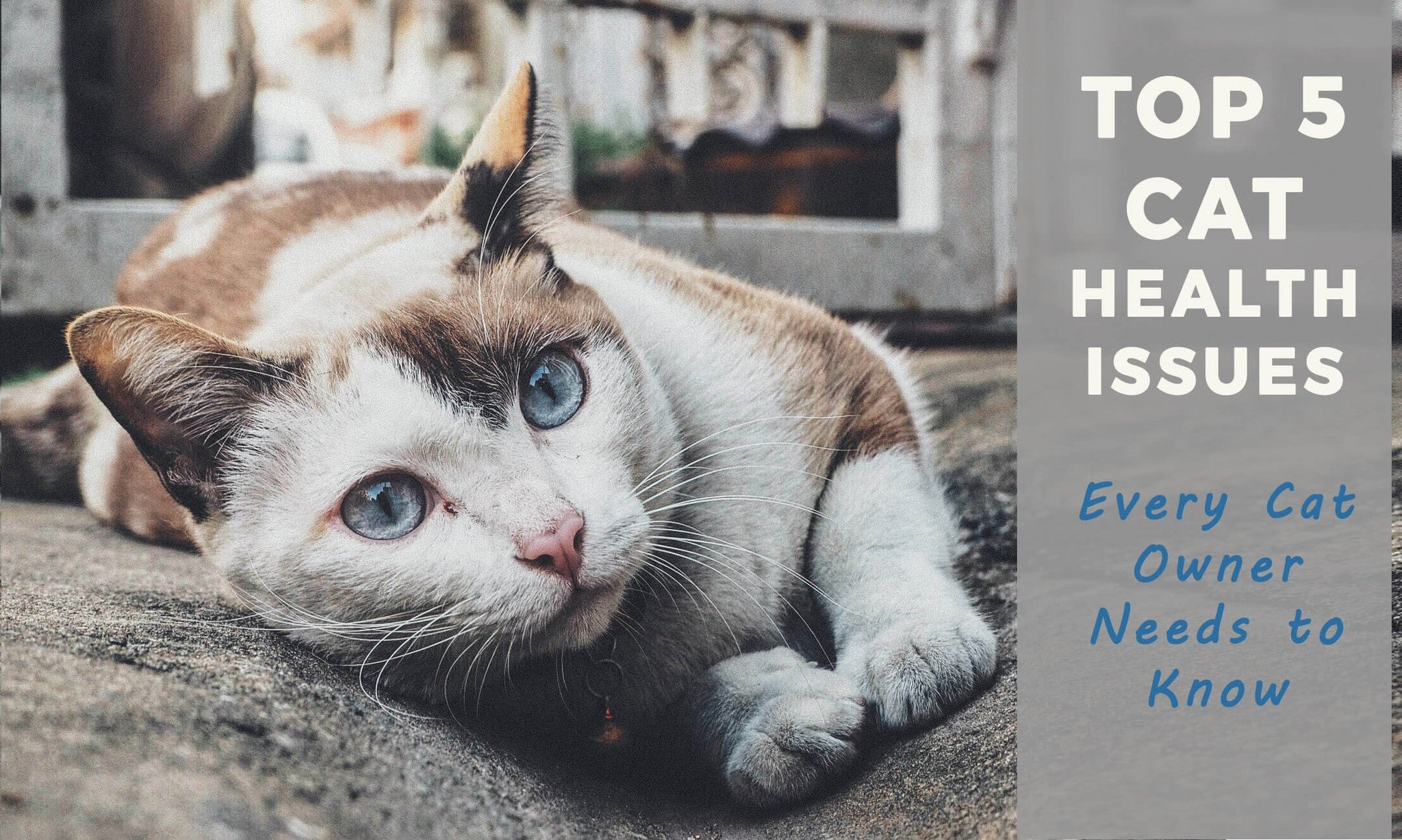We spend time, money, and energy to keep our pups well, but did you realize that 14% of dogs will have a Urinary Tract Infection in their lifetime? Even though it is common to have a UTI in dogs (Urinary Tract Infection), and to struggle with incontinence and bladder issues, they still cause dog parents to feel worried. The good news is, by learning more about these problems, we can help our furry buddies handle them better and start feeling happier again. It is important to know the causes, symptoms, and safe treatments for dog incontinence and bladder issues in dogs. By understanding these, we are able to give the best possible care for our furry companions, to help with their comfort, health, and happiness. Learning how to treat dog UTI at home is important before they happen to be well prepared.
Table of Contents
1. Why Do Dogs Get UTI’s, Bladder Infections or Leaks?
Just like their humans, dogs may have pesky urinary tract infections. UTI in dogs are a common cause of bladder issues. When bacteria or other feces or debris enter the urinary tract, they can cause inflammation and irritation, leading to frequent urination and potential urine leakage. A UTI is an infection in one or more places in the urinary tract—the ureters, kidneys, urethra, and/or bladder. UTI in dogs usually cause the dog to need to pee more and more often and to have pain and possibly burning when they go. It is important to note that UTIs can affect male or female dogs of any age. There are different causes of urine leaks, bladder issues, and UTI’s in dogs (urinary tract infections). Even just age may be a cause of UTI in dogs (Senior pets need special love, see our tips on how to best care for them). Understanding these causes is key in determining the appropriate treatment approach and managing the condition effectively. Here are causes of bladder issues and UTI in dogs:
Environment
Keeping the dog’s living space clean is important, as dogs are attracted to pee and poo in the same place, putting them at risk for bacteria that can cause a UTI in dogs. Sadly, some dogs are not cared for as the cherished family members they should be. Unclean living areas such as crowded kennels, shelters, backyard breeders, and puppy mills that are not cleaned often create a place for bacteria to thrive, and the poor dogs don’t have a clean place to pee. This leads to more risk of a UTI in dogs.
Stress
Dogs love stability and routine. When this is interrupted, they get stressed, even if we don’t see it on the outside. Many things may cause stress, even just simple changes such as a trip to the groomer or the vet, or moving to a new home. Stress is bad for us and our pups alike as it weakens the immune system, giving opportunity for bacteria to take over and cause infections, including UTI in dogs.
When this is interrupted, they get stressed, even if we don’t see it on the outside. Many things may cause stress, even just simple changes such as a trip to the groomer or the vet, or moving to a new home. Stress is bad for us and our pups alike as it weakens the immune system, giving opportunity for bacteria to take over and cause infections, including UTI in dogs.
Hormonal Imbalances
Hormonal changes may change a dog's urinary control. When female dogs are spayed, they have less estrogen and that can weaken the muscles of the urethra. That is the tube that carries urine from the bladder to the outside of the body. This may lead to urinary incontinence, where urine leakage occurs involuntarily. Also, be sure to know how to treat a dog UTI at home before a dog is spayed, as the surgery puts her at a higher risk of getting a UTI. A dog recovering from a spay surgery may hold her urine for longer periods of time than normal since she is often in pain. As a result, the urine concentrates and creates a perfect environment in which bacteria can thrive. Anesthesia may also relax the urethra of the dog, which makes it easier for bacteria to travel up there causing an infection. Neutered male dogs may experience similar issues due to less testosterone affecting bladder muscle tone.
Weak Bladder Muscles
Some dogs may have naturally weak bladder muscles, while others may develop this issue over time. Weakened muscles are less effective in retaining urine, leading to accidental peeing. This might happen during normal activities, such as walking or resting, and might happen more often when the dog is sleeping or relaxed.
Urinary Tract Infections (UTIs)
Just like their humans, dogs may have pesky urinary tract infections. UTIs in dogs are a common cause of bladder issues. When bacteria or other feces or debris enter the urinary tract, they can cause inflammation and irritation, leading to frequent urination and potential urine leakage. A UTI is an infection in one or more places in the urinary tract—the ureters, kidneys, urethra, and/or bladder. UTIs usually cause the dog to need to pee more and more often and to have pain and possibly burning when they go. It is important to note that UTIs can affect male or female dogs of any age.
Bladder and Kidney Stones or Tumors
Bladder stones, kidney stones, or tumors may block urine flow and cause bladder issues. Bladder stones and kidney stones, are crystallized mineral deposits that sometimes form in the bladder due to infections, or in the kidney due to over concentrated waste. These stones can irritate the urinary tract system, leading to inflammation and potential incontinence. Tumors in the bladder will change normal urinary function and cause different symptoms, including pee accidents. Kidney disease is another cause.
Endocrine Disease and Neurological Conditions
Diabetes and Cushing’s Disease, along with the medicines used to treat them, weaken a dog’s immune system, putting them at higher risk for UTI in dogs. Some neurological disorders or injuries can affect the nerves that control the bladder and urinary sphincter, leading to incontinence. Conditions such as dementia, intervertebral disc disease, spinal cord injuries, or degenerative disorders can mess up the way the brain and bladder “talk” to each other, causing a loss of bladder control.
Congenital Abnormalities
In some cases, dogs may be born with structural abnormalities in the urinary system, such as ectopic ureters or bladder malformations. These congenital conditions can interfere with normal urine flow and contribute to incontinence or other bladder problems. For recurring UTI in dogs or bladder control issues, it is important to figure out the cause in order to best manage, treat and prevent them in the future. Avoiding the use of immunosuppressants and keeping a clean environment for potty breaks is a wise first step.
2. What are the Symptoms of UTI in Dogs?
Being aware of and noticing the early signs of UTI in dogs is important in order to prevent them from getting worse. Here are some symptoms to look out for:

- Peeing often: If your dog starts more often than usual or needs more potty breaks, there could be a problem. For example, a dog that typically goes outside to urinate every few hours may need to do so every hour or even more frequently. Also, keep an eye out for signs of discomfort, restlessness, or pain during urination. These could be indications that your dog is experiencing pain or difficulty.
- Urine Leakage: Notice small puddles or wet spots around the house, even though your pup is well-trained? Having pee accidents can be caused by UTI in dogs or more serious kidney or bladder issues.
- Dribbling or Trailing Urine: Dribbling is when the dog walks or moves, leaving a trail of pee behind. The dribbling might be worse after the dog has urinated, but it might also happen all day.
- Wet Fur or Skin Irritation: Constant accidents might lead to wet fur.. The skin in these areas may become moist, irritated, or inflamed due to constant wetness and urine. In some cases, skin infections may develop, resulting in redness, itching, or sores. It is important to keep those areas clean and dry to prevent that.
- Increased Thirst: UTI’s and kidney issues sometimes cause the dog to be more thirsty. If there is a noticeable change in your dog’s drinking habits, be alert for other symptoms, and if needed seek treatment.
3. How to treat UTI in Dogs at Home
Treating dog incontinence requires a comprehensive approach that targets the underlying cause while also managing the symptoms effectively. The choice of treatment depends on the specific cause identified by a veterinarian through a thorough examination and diagnostic tests. Here are some safe and commonly used treatments for dog incontinence:
Diet Changes
Changes to your dog’s diet may help them to control their bladder. Dogs with a history of kidney and bladder stones may benefit from a special planned diet that helps dissolve or prevent the formation of stones. Avoiding foods such as wheat, beans, soy, and processed meats, but not reducing protein too much, has shown to help. Also for prevention or treatment, be sure your dog's diet is nutritionally balanced and as natural as possible to support overall health and help reduce the risk of UTIs and promote overall bladder health. Use BestLife4Pets Dog UTI & Kidney + Incontinence Support to support your pet.
Lifestyle Adjustments and Management
Making changes to your dog’s home life might help to manage leaks and UTI in dogs. Try to:
- Encourage more drinking and fluids. If your dog is not drinking enough water, try a dog safe chicken broth to get more fluids in to flush out the kidneys and urinary tract.
- Take potty breaks often: Taking your dog outside for potty breaks often to help have less accidents inside and keep the bladder emptier reduces bacteria.
- Crate training: Using a crate for your dog when you are not able to watch them to prevent accidents is a great way to avoid messes. Dogs generally will not go potty where they sleep.
- Absorbent pads or diapers: Using absorbent pads or dog diapers are a good way to minimize accidents and cleanup needed in your home.
- Hygiene and skin care: Be sure to keep your dog clean and dry to prevent skin irritations or infections.
Overcoming UTI’s and Bladder Issues for a Happier, Healthier Life
Realizing that your dog is having trouble controlling their bladder is concerning. But don't stress!  There are ways to help your furry friend feel better and live a happier life. First, pay attention to your dog's usual habits. If you notice any changes, like more accidents in the house, it's important to act fast. Use BestLife4Pets Dog UTI & Kidney + Incontinence Support. These supplements, along with changes to your dog's lifestyle and some special techniques, can help reduce accidents and keep your pet's bladder healthy. At BestLife4Pets, we make products that help keep your pet healthy and happy. By taking action early, you can help your dog live without pain and enjoy life to the fullest.
There are ways to help your furry friend feel better and live a happier life. First, pay attention to your dog's usual habits. If you notice any changes, like more accidents in the house, it's important to act fast. Use BestLife4Pets Dog UTI & Kidney + Incontinence Support. These supplements, along with changes to your dog's lifestyle and some special techniques, can help reduce accidents and keep your pet's bladder healthy. At BestLife4Pets, we make products that help keep your pet healthy and happy. By taking action early, you can help your dog live without pain and enjoy life to the fullest.



